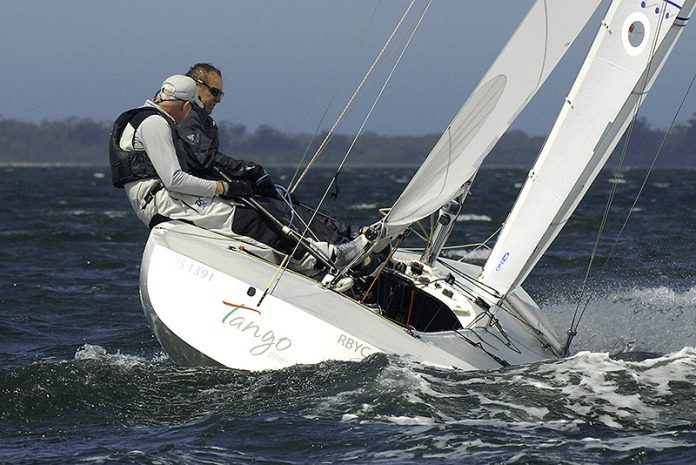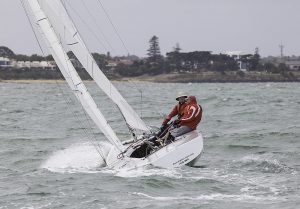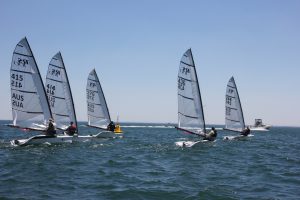

Use your Traveller or Mainsheet to depower the mainsail. The traveller has two functions, it controls the boom’s angle to the wind and it steers the boat controlling helm and heeling in puffs and lulls.
Mainsheet
The mainsheet controls the twist and then you use the traveller to position the boom on the centreline. This gives maximum power and pointing as long as the helm and heeling are within the normal parameters. These are the ones that give the best results for your respective type of boat.
As a general rule of thumb, as the breeze builds and mainsheet tension increases, the traveller will gradually be dropped to keep the boom on the centreline.
Traveller – Use your Traveller or Mainsheet
In medium conditions, the role of the traveller will expand to include control of helm. As the boat generates weather helm, drop the traveller to de-power the boat.
The position of the boom, relative to the centreline becomes irrelevant. In medium air, play the traveller aggressively to maintain the correct amount of helm.
Dump the traveller quickly at the onset of a puff. Pull it up as the initial power of the puff dissipates and turns into forward speed instead of heel.
If you leave it down too long you will miss the opportunity to point once the boat has

accelerated.
The beauty of using the traveller is that the mainsail twist which is controlled by the mainsheet and which is vital to both speed and pointing, does not change, only the total amount of power.
The mainsheet is the Gross Trim
The main sheet is the “gross trim” adjustment for the overall amount of power.
As a general rule of thumb, on fractional rigged boats with large mainsails, the mainsheet is played more aggressively and the traveller is usually kept closer to centreline.
The mainsail trimmer continually makes adjustments to both traveller and mainsheet based not just on the overall amount of power, but issues like boat speed, waves, and even a tactical situation.

